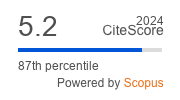Article | Open Access
Social Investment Policies in the EU: Actively Concrete or Passively Abstract?
| Views: | 3233 | | | Downloads: | 1775 |
Abstract: Against the historical-conceptual background of EU social policy and evolutionary governance, this article analyses the approach with which the EU propagates social investment policies. Social investment, understood as an active rather than passive way of social protection, has become a salient instrument for reinvigorating the EU’s social dimension, especially in the aftermath of the sovereign debt crisis. By means of a large-scale document analysis, we develop four EU social investment propagation approaches (reference, objective, tool, and action) according to how active (passive) and concrete (abstract) the EU’s intervention in social investment is. The results show that the EU mainly propagates social investment with an active approach, i.e., policy recommendations targeted at national governments. In terms of substance, the EU’s treatment of social investment is based on labour activation policies backed by skills development and job search support policies, which is consistent with the main purpose of social investment.
Keywords: co-evolutionary governance; EU social policy; labour market activation; social investment
Supplementary Files:
Published:
© Gaby Umbach, Igor Tkalec. This is an open access article distributed under the terms of the Creative Commons Attribution 4.0 license (http://creativecommons.org/licenses/by/4.0), which permits any use, distribution, and reproduction of the work without further permission provided the original author(s) and source are credited.


